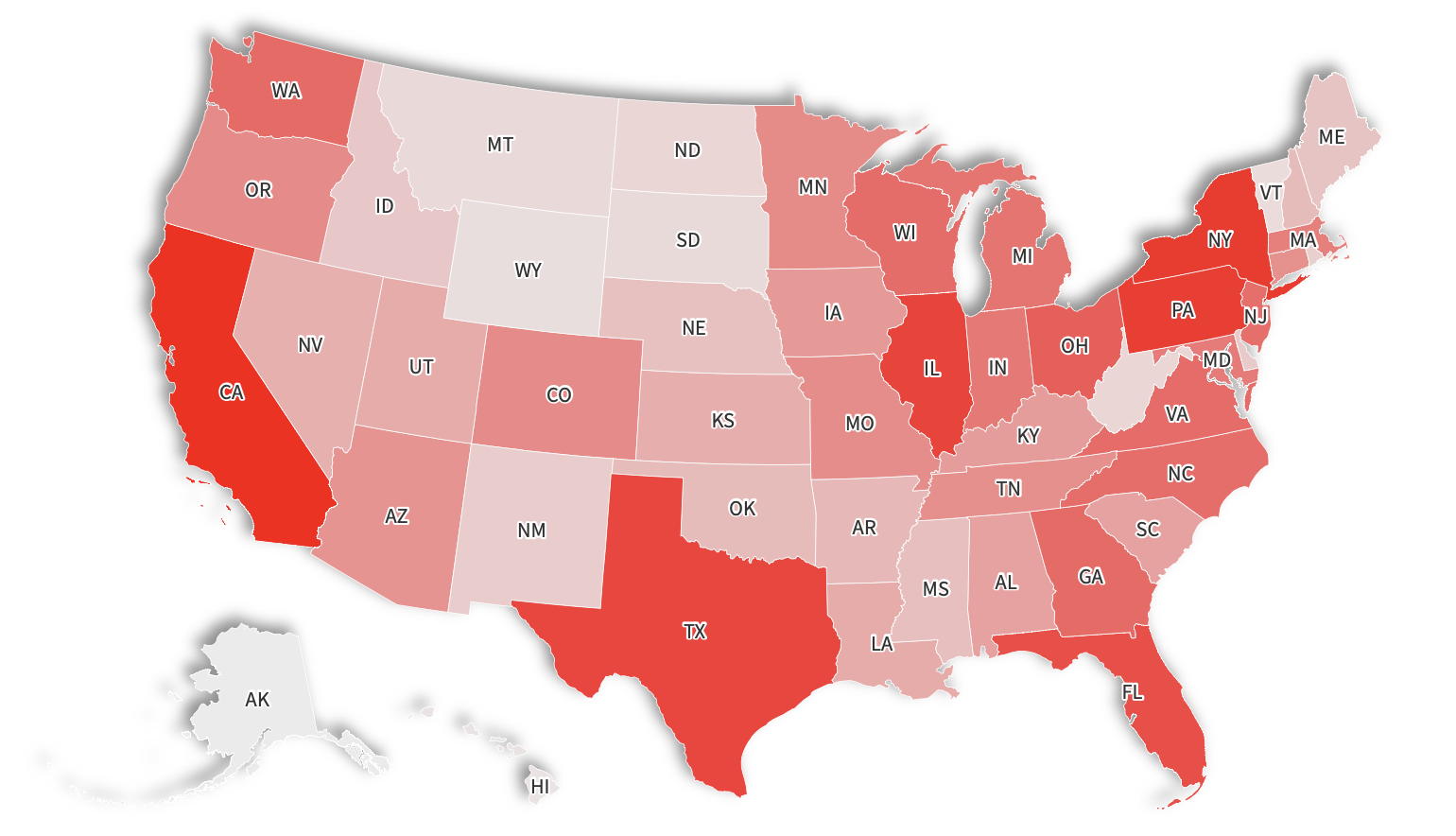Food recalls are a regular occurrence in the U.S., but certain states face a higher frequency than others. An analysis by Traceone, a regulatory compliance firm, reveals that from 2020 to 2024, California topped the list with the highest number of federal government recalls.
These recalls happen when products violate regulations set by the U.S. Food and Drug Administration (FDA) and the Food Safety and Inspection Service (FSIS), typically due to undeclared allergens, harmful pathogens, or foreign objects. California alone accounted for nearly 40% of all nationwide recalls, with New York close behind at 36.4%, followed by Pennsylvania at 35.8%. Illinois (34.8%) and Texas (34.5%) rounded out the top five.
Combined, these five states represent about 44.1% of the U.S. population, totaling approximately 114.6 million people based on 2023 Census data.
On the flip side, Alaska and Hawaii recorded the lowest recall numbers in the past four years, with 14.7 and 15.6 recalls, respectively. Among the contiguous U.S. states, Wyoming (16.1%), Vermont (16.4%), and South Dakota (16.5%) also had relatively low recall counts according to Traceone.
The primary triggers for recalls are unintended allergens and contamination with dangerous bacteria. Traceone reports that allergen contamination constituted nearly 40% of recalls between 2020 and 2024, while bacterial issues like salmonella and E. coli accounted for around 21%. Such contaminants can lead to serious health risks, making these recalls critical.
Recently, a widespread Listeria outbreak linked to deli meats resulted in two fatalities and over twenty hospitalizations, underscoring the stakes of food safety.
Recalls can also be prompted by foreign objects, such as bits of plastic or metal, which represented 11.6% of the total recalls. Additionally, dangerous contaminants like lead made up 1.7% of the withdrawals.
Notably, the annual recall numbers climbed from 454 in 2020 to 547 in 2023—a rise of over 20%. Projections for 2024 suggest that the total recalls will likely be on par with those of 2023.
